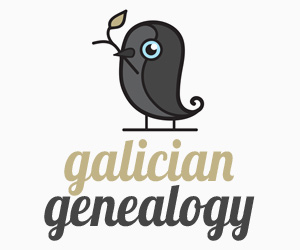Aleksander Czolowski (1865-1944) – Polish ethnographer, archivist and director of the Historical Museum in Lviv.
While collecting information for the publication of the history of Kalush town and area, he sent out questionnaires to each place from this region. The answers received concern the local population. We believe that this is valuable information that enriches knowledge about our ancestors.

Author: Kajetan Kielsiński (1808-1849), source: Biblioteka Narodowa G.23807/II
Podmichale
THE 1892 QUESTIONNAIRE
1. Where is the location of the village? (detailed description in every respect)
The village of Podmichale is situated between two rivers, from the north surrounded by the Lomnica river and from the south by the Bereznica river. Behind the Bereznica there are hills called „Werchowyna” by the local people. In the municipality of Podmichale are living 2,500 people and the length of the village is 6 kilometers. The location of the village is on the very low level [to the water], because during the flood the village is flooded by rivers. The Lomnica river has changed several hundred hectares of land into the area covered with mud and sand. As a result the price of land increased. The price of 1 morga [about 2 acres] is up to 100 Rhine Guilders.
2. What is the history of place name and foundation ?
200 years ago, at the mountain of the so-called „stary cmentarz” (old cementery) was the monastery of the Basilian monks with the church dedicated to Saint Michael. It gave name to the village Podmichale
[Pod = under, Michale = Michael]
3. Description of the Church and its monuments.When it was founded, built and consecrated, where it is located ?
No one remembers the old church which was on the mountain. Later, the church was built at the foot of mountain. Nowadays, a new wooden church was built and consecrated in 1891 year. The church isn’t decorated inside yet.
4. From what year Vital Records and Church Acts begin ?
Begin with 1700 year
5. Are there graves, trenches, caverns, older commemorative crosses and statues with mysterious names ? Do they have any legends?
There aren’t
6. Do you have any information about historical events, such as Tatar attacks, battles, robberies, thugs and so on ?.
No
7. Have ancient artifacts been dug here? For example, stone tools, coins, elements of ancient weapons and so on?
No
8. What are the physiological traits of the local population ?
Hair color Blond – Facial complexion White – Growth Medium – Physique Slim
Endurance at work Good – Temperament [not answered] – Healthiness Good – Morality Satisfactory
9. What is the dress (everyday and festive, summer and winter.) What are its parts? How are they called ? cut, color, decorations
Men’s everyday clothes are trousers made of white linen and a “weretianka” [name of the linen shirt]. During winter, a short sheepskin coat. Festive outfit in summer is a stitched caftan – called “spencer”. Long sheepskin coat is worn during winter holidays.
Women and girls. Their dress is black skirt with grey dots and flowers, “weretianka” (shirt) made from linen. Festive outfit is a colorful skirt, a white apron and a jacket embroidered with ribbons. Women and girls wear red headscarves. White wrapped headscarf called „rańtuch” go out of use. During winter, women wear coats lined with white sheepskin
10. Is there foreign origin in the types of clothing of the local population?
No
11. Are there any specific customs, typically local, in the population?
There aren’t
12. What are the local trade items and where are they sold to?
None
13. What is the main source of income?
Agriculture
14. How many people were deceased and new born in the village in 1892?
Deceased – 49, New born – 87
